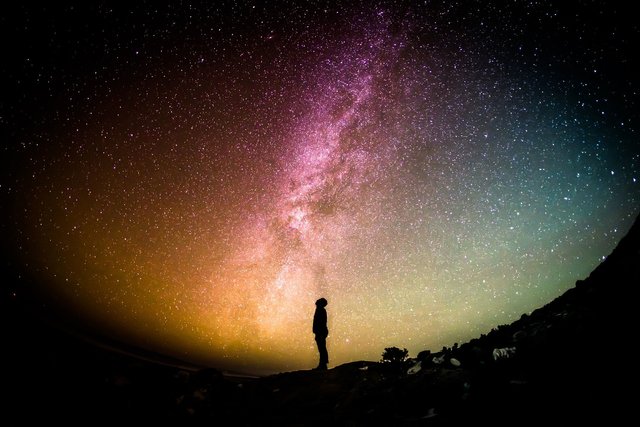The cosmic microwave background suggests a value for the Hubble constant. But our observations of supernovae suggests the constant is different. Could it be because the Milky Way and thousands of other galaxies are inside a Hubble Bubble?

Image by Free-Photos from Pixabay
- Be also sure to check out my other posts and follow me @kralizec and subscribe to my Youtube channel at Kralizec Gaming Youtube Channel
Cosmology has a problem. It seems that the Universe is expanding. If we do not count in all the fuss around dark energy then the mystery is – what is the speed of the expansion? Currently, there exists a number of guesses of the speed that oscillate between two values for the Hubble constant that differ by about 10 percent. This is too big of a difference to just be noise in data. And this mystery has been bothering physicists for more than ten years.
But, what exactly is the Hubble constant? Simply put, it is the speed at which the Universe expands. It is measured in kilometers per second per megaparsec. One megaparsec is roughly 3 million light-years. So if the Hubble constant was (and it isn't) 100 kilometers per second per megaparsec then if you were 3 million light-years away from the Earth then every single second the Earth would get an additional hundred kilometers further away just because of the expansion of the Universe alone.
The Disagreement Between Cosmic Microwave Radiation and Supernovae
Lucas Lonbriser from the Swiss Université de Genève and his colleagues are convinced they have cracked this cosmic mystery. According to them, the Solar system, all of the Milky Way, and a few thousand other galaxies are moving through the Universe inside a gigantic bubble of lower matter. This gigabubble should have a diameter of roughly 250 million light-years and should be roughly half the density of the Universe beyond its borders.
Generally, there are two ways to estimate the Hubble constant. The first method is based on analyzing the cosmic microwave background. According to this method, the Hubble constant is roughly 64.4 kilometers per second per megaparsec. The second method uses supernovae that we observed in faraway galaxies. According to this method, the Hubble constant is almost 74 kilometers per second per megaparsec.
Lombriser and his colleagues think that this conflict that doesn't go away with better equipment – actually the opposite is true – doesn't have to be explained with some new physics. They think it is just because the Universe is less homogeneous than we think. You can easily see that there is more matter inside of galaxies and less matter outside of them. But what if this is the case even on larger scales?
We may find ourselves inside a gigantic Hubble Bubble. If the inside of such a bubble has significantly less matter than the surrounding Universe it would affect our attempts to figure out the Hubble constant. In such a case it would be enough if such a Hubble Bubble was large enough to encompass even some galaxies that are far away that we use to measure cosmic distances.
A Hubble Bubble with a size of roughly 250 million light-years and a 50 % density of matter inside it compared to the surrounding Universe would lead – based on the scientists' calculations – to a Hubble constant based on cosmic microwave radiation with a value of 67.4 kilometers per second per megaparsec.
We will need more analyzing and making sure this is right but scientists may have just solved this cosmic mystery.
Sources:
- If you like the content I’m producing about science maybe you will like the content I produce about gaming as well! Be sure to check out my other posts!
Good post
Downvoting a post can decrease pending rewards and make it less visible. Common reasons:
Submit